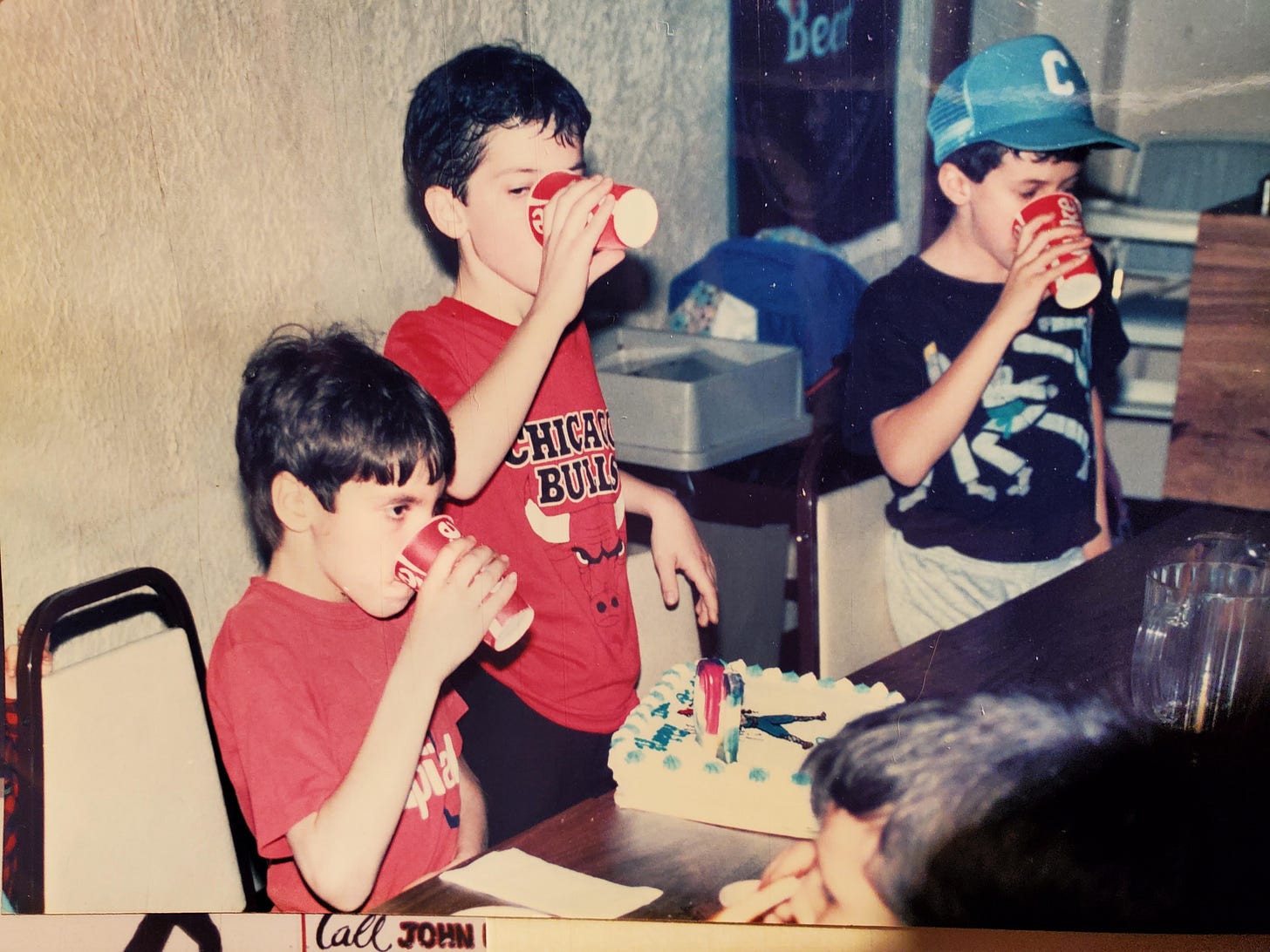The nadir of my difficult adolescence came during my freshman year of high school and the following summer. As I have written, by the time I started high school, I was a radically different person from the precocious, goofy 10- and 11-year-old I was throughout most of my memoir “Death of a Childhood.” And I only felt less self-confident and more anxious as that year crept on.
But fall of my sophomore year marked a turning point. I especially recall one key Friday night in early November 1993. I attended a B’nai Brith Youth Organization (BBYO) conclave at a hotel in suburban Washington, D.C., and we discussed sexism. As we sat in a room full of 15-20 fellow sophomores assembled in a semicircle on carpeted floor in a small banquet room, facing a program leader, Adam and I spoke up. We simultaneously cited a recent episode of “Saved by the Bell: The College Years” featuring Kelly working at Skeeters, a restaurant clearly channeling Hooters.
We were both still “Saved by the Bell” junkies, but that seemed to me to be one of the few similarities we had left. He was excelling socially after his parents allowed him to return to public school with many of our Ritchie Park clique, while I was a cast-off at a Bethesda private school I loathed. BBYO had become my social refuge when I was not hanging with neighborhood friends -- usually in somebody’s basement playing Sega or pool or watching gangster movies, often without any girls around.
That night I was sitting next to Adam, which must have been his choice because I never took any social initiative then. He grabbed my left wrist lightly and wrote with a pen on the fleshy area between my thumb and index finger:
“I’m Adam’s friend Ryan.”
We briefly looked at each other, then returned our gaze to the speaker.
But my attention was elsewhere. To say I was touched by this act would be an understatement.
Adam and I had been friends since second grade, when he moved to the area from New York. We had been close for the rest of elementary school when we attended Ritchie Park together, but I felt like we had been slowly drifting apart since we started attending separate schools in sixth grade. He was often short with me because I was behind socially and said stupid shit. While he presented self confidence in social groups big and small, I held back in large groups, fearful of saying more stupid shit. I preferred to leave some doubt in my peers’ minds that maybe I wasn’t such a loser – even if I was sure I was.
We continued playing basketball and baseball together and joined the same BBYO chapter when freshman year started, so we still hung out a lot. But I never knew where I stood with him in middle school or our first year-plus of high school. I had few friends I really trusted and did not have the same connections with my neighborhood chums as I did with my old friends. And I was getting desperate; I needed to fit into more social situations, but did not know how.
If I hated myself and my own father seemed to dislike me, though, how could I expect other kids to want to hang with me? So I didn’t, even though I learned later that many of them did. (Pour one out for all the important things left unsaid between ’90’s teens.) By early sophomore year, my self confidence was so low that I assumed my old friends didn’t like me anymore. Playing organized sports and being in BBYO together must have forced them to be around me, I thought.
Then Adam wrote on my hand. He didn’t draw a penis; he jotted clearly: “I’m Adam’s friend Ryan.” So I was still his friend. I immediately felt a surge of adrenaline and comfort. This popular, outgoing kid who had so many friends and surely did not need me as another…He still thought of me as his pal?
After our program ended, I asserted myself. We decided to rent a movie from the hotel convenience store and I persuaded the other sophomores to watch “Flatliners,” a horror flick I could not finish when it had come out on cable when I was 12. (Because it scared the shit out of me; I still have never owned a red-hooded sweatshirt since then.) We gathered in my room to watch; Adam threw a blanket over himself and a girl named Sherri. The rest of us kept watching the flick. Several kids were scared shitless, including me again, so my friend Julie and I stopped the movie.
Later a few of us moved into a room full of juniors and watched another film featuring Kiefer Sutherland. By 1993, “Stand By Me” had already been established as a classic, but I am not sure I had ever seen it all the way through. It just so happened that River Phoenix, one of the film’s young stars, had died of a drug overdose the previous weekend. So the junior boys wanted to screen it for the girls; most of them had never seen it. (The movie had been released with an “R” rating in 1986, when we were all elementary schoolers. And I looked like this:)
Maybe three years earlier, a bunch of us had disappeared into the woods abutting Adam’s suburban neighborhood after one of our baseball games, walking and talking until sundown. Adam called it our “Stand By Me” day. Did I get it?
That night at the hotel, I didn’t yet recognize any parallels between myself and Gordie LaChance. But it did not escape me that an old friend had proved he was still with me. Was I weird? Definitely. But so what.
Happy birthday, Phaddy!




